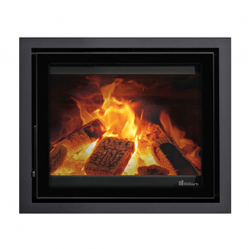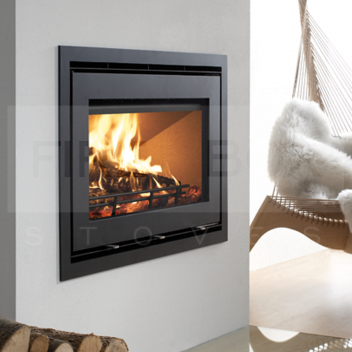Technical Details
| Product Title | Westfire Uniq 32 SE Inset Stove, Narrow Frame, 5.9kW, Black |
|---|---|
| Product Keyword | Westfire Uniq 32 SE, Inset Stove, Narrow Frame, 5.9kW Stove, Black Stove |
| Energy Efficiency | A+ |
| SIA Ecodesign Ready | No |
| Output (Nominal) | 5.9kW |
| Output (Maximum) | 6.8kW |
| Smoke Control (DEFRA) | Yes |
| Boiler Stove | No |
| Colour | Black |
| Flue Outlet Size | 150mm - 6in |
| Fuel | Wood |
| Height | 610mm |
| Width | 880mm |
| Depth | 430mm |
| Nominal Output (Range) | 5kW - 7kW |
| Width (Range) | 800mm - 1000mm |
| Nett Efficiency (%) | 82 |
| Max log length | 650mm |
| Distance to Combustibles (Side) | 150mm |
| Distance to Combustibles (Rear) | 200mm |
| Style | Modern / Contemporary |
| Centre of Flue to Rear | 167mm |
| Direct Air Kit Available | Yes |
| 12mm Hearth Compatible | Yes |
| Convector or Radiant | Convector |
| Height (Range) | 600mm - 700mm |
Product Description
Westfire Uniq 32 SE Inset Stove, Narrow Frame, 5.9kW - Black
- High-quality inset stove with a narrow frame for a sleek, modern look
- Strong nominal heat output of 5.9kW, perfect for warming medium-sized spaces
- Designed to fit seamlessly into a standard UK fireplace opening
- Features a large glass window for an impressive view of the flames
- Airwash system to keep the glass clean and clear
- Secondary combustion technology for improved efficiency and cleaner burning
- Easy-to-use single air control for simple operation
- Constructed from high-quality steel with a durable black finish
- Smoke Exempt (SE) model, suitable for use in smoke control areas
- Energy Efficiency Class: A, ensuring less fuel consumption and lower emissions
- Dimensions: specific measurements to fit a variety of installations
- Approved by DEFRA for use in smoke controlled areas
File Downloads
Reviews
Inset Stoves > 6kW and over Inset Stoves

6kW and over Inset Stoves
A perfect heating solution for those larger areas which require a little extra heat, 6kW and over inset stoves look beautiful in their design, as well as producing a lot of heat for very little effort. These stoves have been designed to fit into false walls or chimney breasts, leaving only the large glass window at the front of the appliance visible. This means they take up considerably less space compared to a freestanding appliance whilst being just as efficient and effective at heating the space.
At Firebox Stoves, we have a wide selection of 6kW and over inset stoves, perfect for those rooms requiring a little extra heat. We also supply some grand and impressive 10kW and over inset stoves- even 15kW plus- perfect for heating those really large or open plan rooms and creating a show-stopping focal point for your home. Our selection of 6kW and over inset stoves are available in landscape and portrait designs, as well as different finishes and frame choices to suit the interior of your home. Whatever type of large inset stove you are looking for, give us a ring or pop into one of our showrooms and we can discuss the options available to you.




